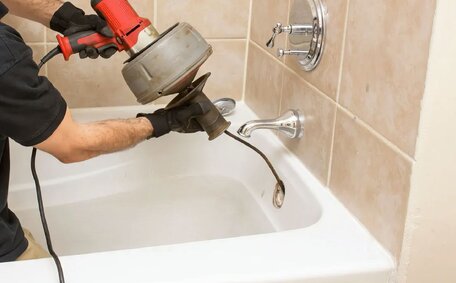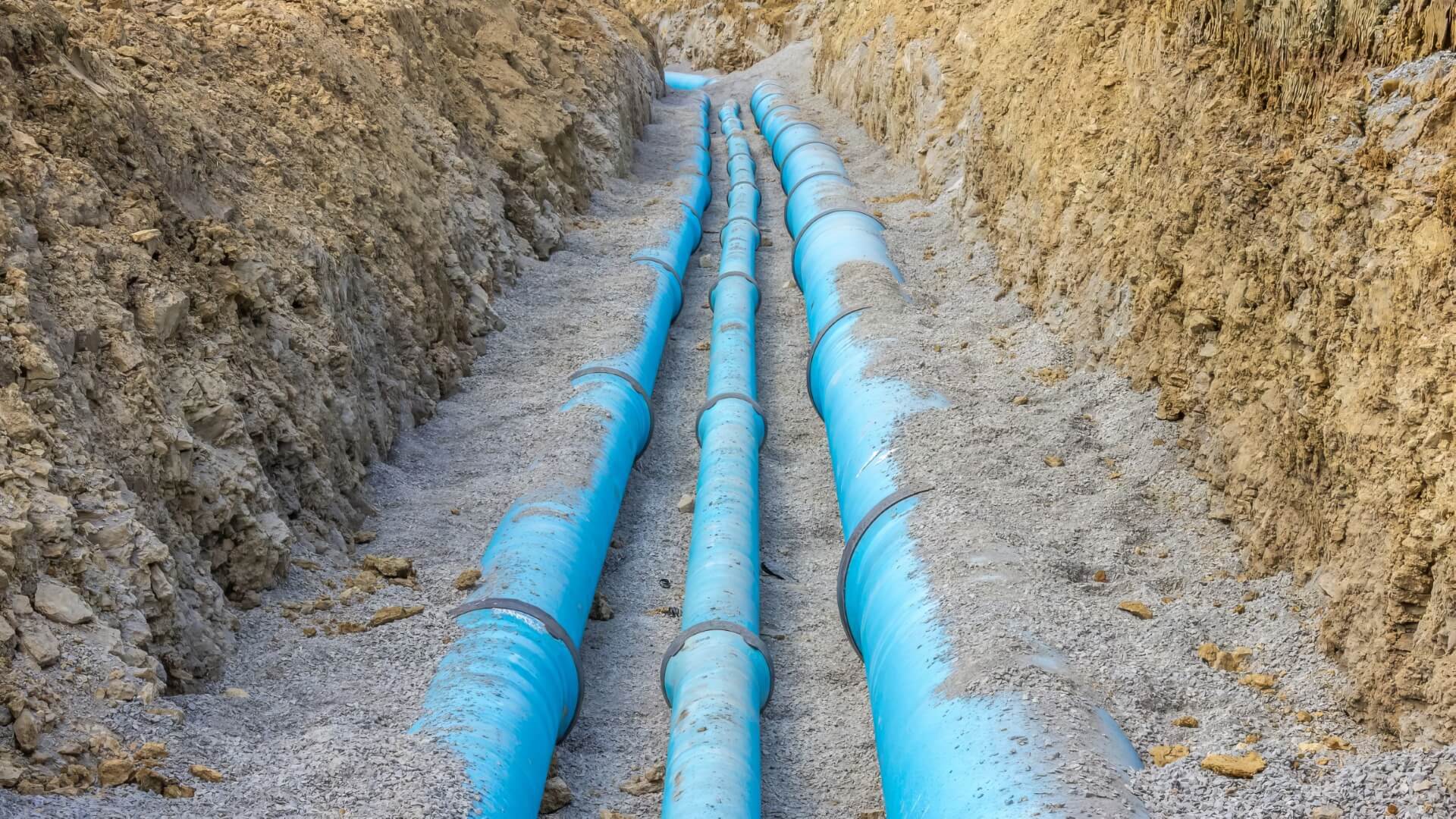What is Pipe Relining?
Trenchless pipe repair is an innovative method that replaces old pipes without the necessity for extensive digging. inserting an epoxy resin lining into the existing sewer pipe to create a new pipe within the old one.
Unlike traditional pipe replacement methods that are highly disruptive and environmentally damaging, pipe relining eliminates the worry about extensive excavation, providing a minimally invasive, environmentally friendly solution for drain repair. Pipe relining is suitable for an array of pipe materials including sewer, water, gas, and drainage systems, and does not necessitate digging or creating pipeline trenches.
The pipe relining process repairs and extends the life of your pipes for decades, conserving resources, reducing waste, and minimising environmental disruption. It maintains flow capacity and water pressure, providing a robust solution that effectively prevents leaks or weaknesses in pipe systems.
How Pipe Relining Works
The pipe relining process involves creating new functionality inside the old structure by inserting a resin-impregnated liner into the damaged pipe to essentially create a new pipe within the old one, swiftly restoring function without need for excavation or extensive works required for pipe replacement.
The key steps are:
- A plumber inspects the sewer line using a CCTV camera to identify issues like cracks, breaks, or root intrusion, enabling effective repair or replacement of damaged areas.
- The pipe is then cleaned to remove any built-up debris or deposits inside.
- A felt liner soaked in thermosetting epoxy resin is inserted into the pipe through an existing access point such as a drain or manhole.
- The liner is inflated with air pressure to fit smoothly against the interior walls of the pipe.
- The resin is then cured, a process known in the plumbing industry as CIPP pipe rehabilitation, usually with hot water or steam, to harden the liner.
- Once cured, the liner has formed a new inner layer within the pipe, smooth, jointless, and corrosion-resistant that restores flow capacity and water pressure.
Compared to traditional pipe repair, Eco-friendly pipe relining is a sustainable, long-term solution that reduces waste and environmental impact more than traditional methods.
These materials resist corrosion and root intrusion, further extending the life of your pipes in an environmentally conscious way.
Materials Used in Pipe Relining
Pipe relining uses durable materials designed to address common piping problems, prolonging the life of your pipes while minimising environmental impact.
The key material, epoxy resin, cures into an incredibly strong, rigid pipe lining, providing a longlasting solution pipe reparations for your plumbing needs. Premium-grade resins, such as the Brawoliner system, offer chemical corrosion resistance while restoring flow capacity.
Liners may be constructed using felt fibres or glass which are then saturated with epoxy resin. Materials are designed to withstand disruptions from water flow, pressure changes, root intrusion, and common pipe damage.
Relined pipes use significantly fewer resources than traditional excavation and piping. Digging up yards with heavy construction machinery
The resin cures within the existing pipe, conserving resources and energy. Plus, this modern plumbing technique revitalises old pipes, enhancing water flow and pressure with a smooth interior.
This not only saves thousands in restoration costs, but prevents unnecessary waste and impact on the environment from pipe replacement projects.
In essence, high-grade epoxy resins and corrosion-resistant liners create a ‘pipe within a pipe’ - restoring functionality for a fraction of the economic and ecological cost of traditional methods.
Comparing Pipe Relining and Replacement
In the debate of pipe relining rather than full pipe replacement, it’s evident that relining emerges as the more eco-friendly and sustainable choice.
Relining uses significantly fewer resources and lowers energy consumption than replacement. There is no need for excavators, jackhammers, concrete or new piping materials that lead to construction waste. A key advantage of pipe relining is the resin’s ability to seal cracks and damage from the inside out, preventing future leakage.
Conversely, pipe relining effectively addresses blocked drains with minimally disruptive procedures that reduce waste. Heavy machinery emits CO2 while industrial equipment and floodlights require vast energy. And there is landscape destruction, litter, noise pollution, traffic disruption and more.
One study underscored the benefits trenchless pipe lining brings, which can reduce costs but also spearhead other eco-initiatives by reducing landfill waste by 94-97% compared to pipe replacement methods.
With such significant savings, pipe relining worth cost becomes evident, halving direct costs and offering impressive durability for 50-100 years. Importantly, it also minimises water wastage by preventing leaks.
So while regular pipe replacement continues to damage the environment, pipe relining proves its worth and cost-effectiveness as a sustainable 21st century solution. Pipe relining employs advanced epoxy resins and construction technology, favouring restoration over replacement for ecological conservation.
Durability and Longevity of Relined Pipes
Relined pipes provide a durable and long-lasting repair solution, offering exceptional longevity compared to traditional piping. The seamless epoxy resin lining extends pipe life by creating a waterproof, corrosion-resistant barrier to prevent leaks and blockages.
Considering how long does pipe relining last, studies by the EPA found that properly relined pipes can have an expected lifespan of 50+ years. The plasticity of cured thermoset resins makes them able to handle pressure fluctuations, water hammer and even seismic activity.
This durability also owes to their seamless, jointless nature. Traditional pipes connected by joints are prone to leaks over time as seals fail. Relined pipes have no joints, protecting against cracks and future water damage.
As the smooth, uniform lining from pipe relining your infrastructure prevents buildup and deposits, it enhances water flow and pressure while reducing pipe maintenance. Root intrusion and cracks can also be effectively prevented from forming.
The environmental benefits of the longevity offered by pipe relining are also significant. Avoiding recurring pipe repairs or replacement conserves energy, resources and minimises economic and ecological costs over decades.
Advanced pipe relining not only repairs damaged systems but also transforms them into lasting, low-maintenance solutions. Relined pipes are likely to outlast traditional piping by three times or more before requiring any further intervention.
When to Choose Pipe Relining
Choose pipe relining when:
- Minimising landscape disruption is key - trenchless technology allows for a 'no dig’ approach, avoiding excavation and preserving the surroundings.
- Tree roots have infiltrated and damaged pipes - The smooth epoxy resin prevents future root intrusion.
- Pipes run under buildings, driveways or landscaped areas - Relining avoids costly demolition and preserves your landscape.
- Multiple leaks, cracks or corrosion damage exist - It restores structural integrity and water flow.
- In Built-up urban areas - Trenchless relining minimises noise, waste and traffic impact.
Essentially, pipe relining offers a swift, eco-friendly, and non-invasive remedy to all common piping issues. The flexibility and durability of resin-saturated liners allows repairs even in difficult to access areas, without disruption to infrastructure.
Relining restores old pipes, often to better than their original condition, eliminating the need for full replacement. If you’re considering high replacement costs and environmental consequences for your drain, reach out to us today to explore pipe relining as a viable alternative.
Enhancing Water Flow with Pipe Relining
Pipe relining enhances water flow with its seamless, smooth interior surface.
Traditional piping contains joints and gaps, but with relining there are no corroded areas or intruding root clusters to obstruct and restrict water flow.
The uniform, jointless inner pipe from the epoxy resin liner maximises flow capacity. Having no corrosion damage, leaks or cracks means water can pass freely without obstruction.
The smooth interior prevents future buildup and blockages, extending the life of your pipes and boosting water efficiency. Flow rates can improve by over 50% in severely damaged pipes after relining.
The durable resin is also resistant to root breaches, another common cause of restricted flow. For your property, unimpeded water flow equates to faster drainage, a reduced chance of backups, and enhanced water pressure.
Essentially, pipe relining restores piping to optimal flow conditions. Pipe relining ensures that the seamless lining maintains high flow rates for decades, free from future leakages or blockages.






